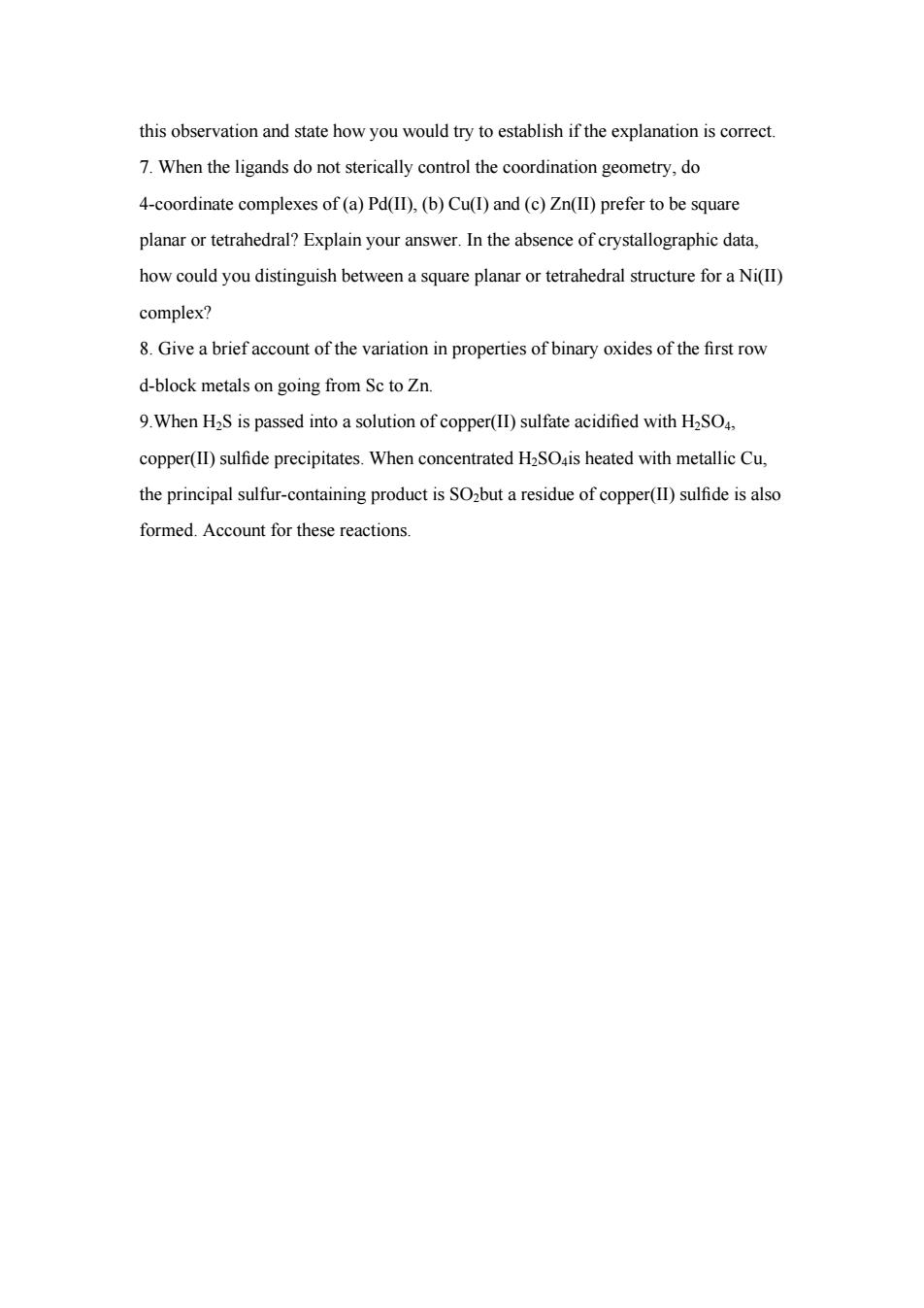正在加载图片...

this observation and state how you would try to establish if the explanation is correct. 7.When the ligands do not sterically control the coordination geometry,do 4-coordinate complexes of(a)Pd(II),(b)Cu(I)and(c)Zn(II)prefer to be square planar or tetrahedral?Explain your answer.In the absence of crystallographic data how could you distinguish between a square planar or tetrahedral structure for a Ni(II) complex? 8.Give a brief account of the variation in properties of binary oxides of the first row d-block metals on going from Sc to Zn 9.When HS is passed into a solution of copper(I)sulfate acidified with H2SO copper(Isulfide precipitates.When concentrated HSOis heated with metallic Cu. the principal sulfur-containing product is SObut a residue of copper(I)sulfide is als formed.Account for these reactions. this observation and state how you would try to establish if the explanation is correct. 7. When the ligands do not sterically control the coordination geometry, do 4-coordinate complexes of (a) Pd(II), (b) Cu(I) and (c) Zn(II) prefer to be square planar or tetrahedral? Explain your answer. In the absence of crystallographic data, how could you distinguish between a square planar or tetrahedral structure for a Ni(II) complex? 8. Give a brief account of the variation in properties of binary oxides of the first row d-block metals on going from Sc to Zn. 9.When H2S is passed into a solution of copper(II) sulfate acidified with H2SO4, copper(II) sulfide precipitates. When concentrated H2SO4is heated with metallic Cu, the principal sulfur-containing product is SO2but a residue of copper(II) sulfide is also formed. Account for these reactions